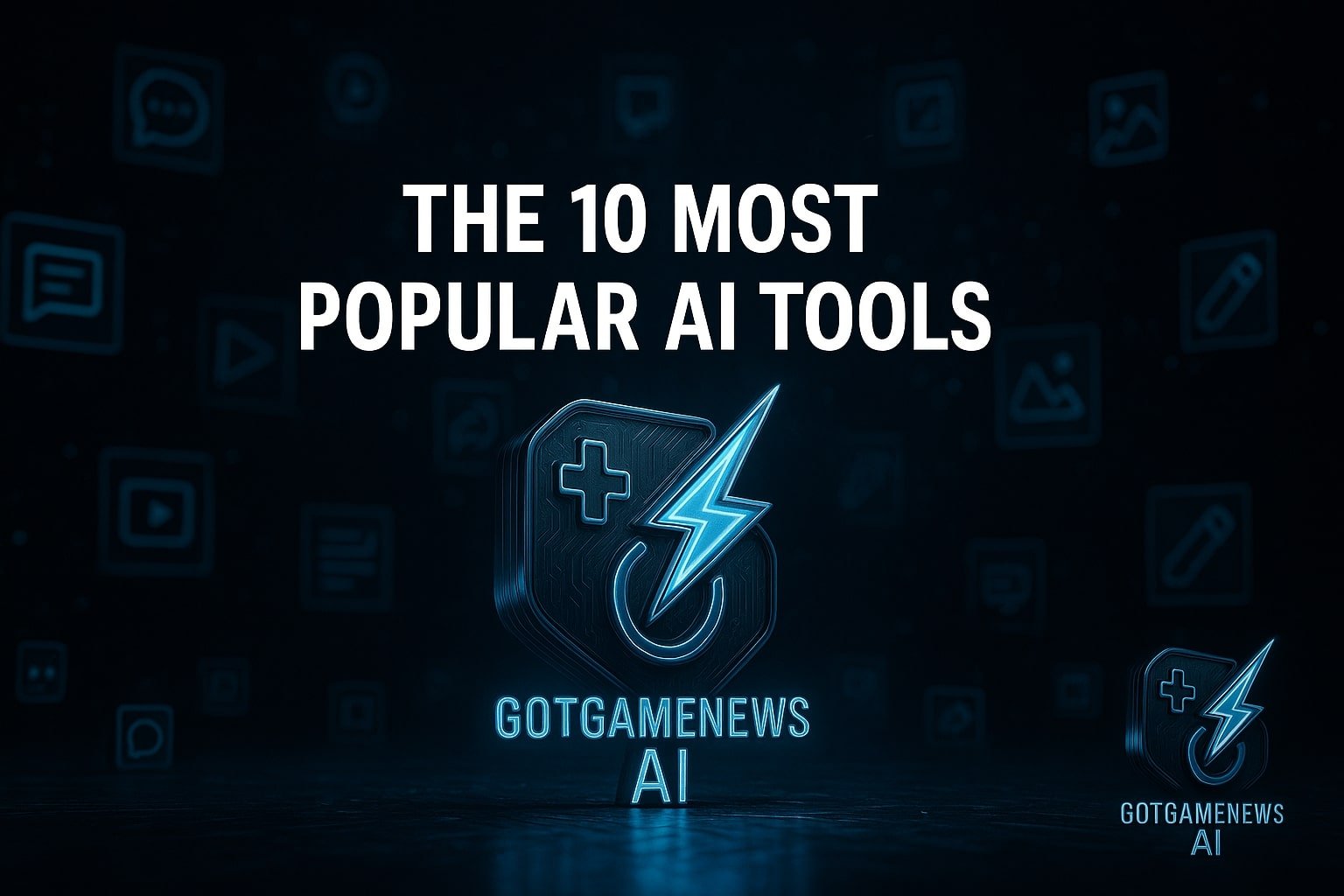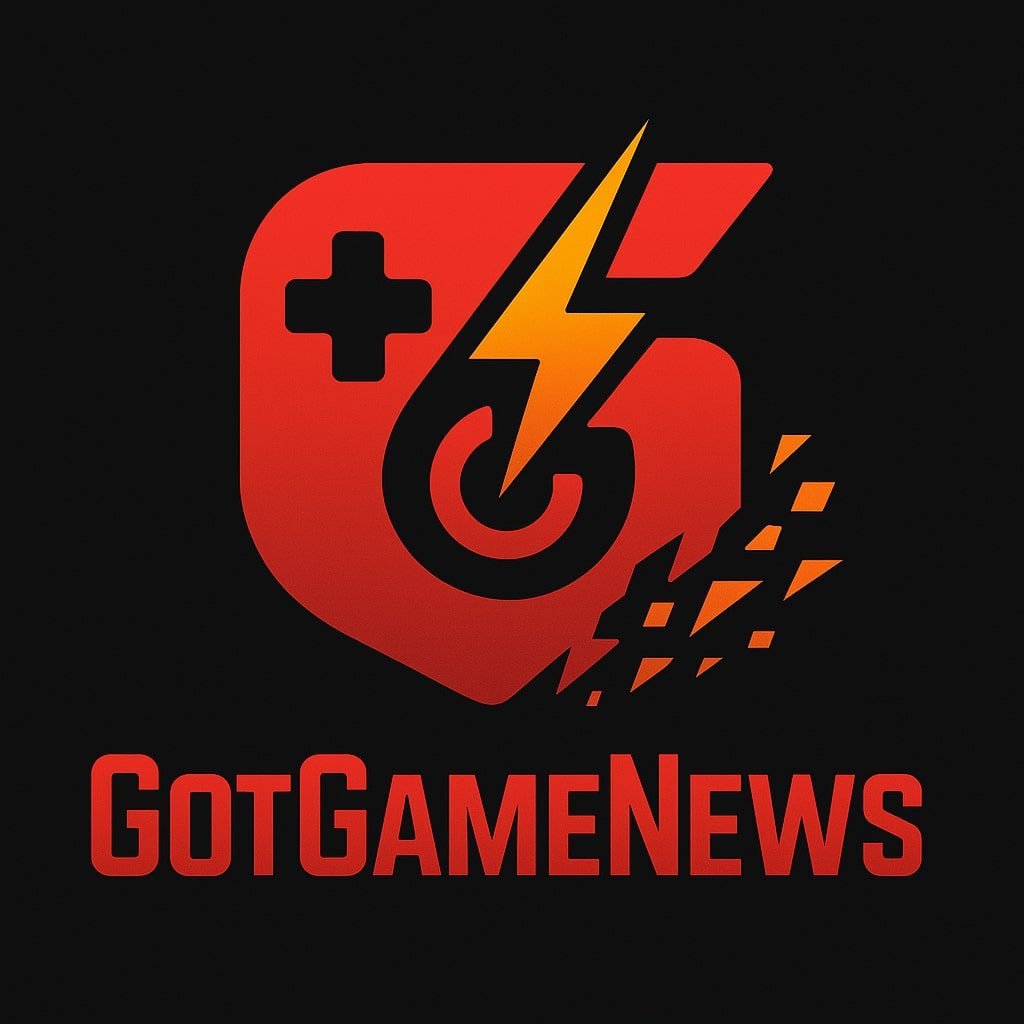From ChatGPT to Midjourney, here’s what the most-used AI tools are actually doing—and why millions rely on them daily
AI isn’t just a buzzword anymore—it’s a utility. It writes your emails, edits your videos, summarizes your meetings, and even voices your podcast. But not all tools are created equal, and popularity doesn’t just happen by accident. The AI tools dominating 2025 earned their spot by solving real problems, saving time, and (sometimes) blowing our minds.
In this deep dive, we break down the 10 most widely used AI tools right now, explain what makes them sticky, and spotlight rising challengers that could reshape the landscape next. Whether you’re a creator, developer, exec, or curious lurker—these tools are defining how work, creativity, and decision-making get done in the AI age.
Let’s unpack what’s winning, why it works, and what’s coming next.
- 1. ChatGPT (OpenAI)
- 2. Canva (Magic Studio)
- 3. Google Gemini
- 4. Microsoft Copilot
- 5. Perplexity AI
- 6. Midjourney
- 7. Fathom
- 8. ElevenLabs
- 9. Runway
- 10. Mistral AI
- Popularity Patterns & Why They Matter
- What This Spells for 2026
- 🚀 Rising AI Tools to Watch
- Final Take
1. ChatGPT (OpenAI)
Why it’s #1
- 400 million + weekly active users, ~4.5 billion site visits monthly (G2 Learning Hub).
- Multimodal muscle: With GPT‑4o, it handles text, voice, images—even audio input and output.
- Custom GPTs & Agents: Users can build task-specific bots (“My Legal Assistant”, “Recipe Planner”) that remember context and chain tasks—booking flights, drafting reports and more.
- Integration ecosystem: Plugins for real-time info (Wikipedia, Expedia), plus Code Interpreter for data analysis.
- Community trust: With transparent citations in research mode, it reduced hallucinations and became a staple in workplaces and personal use alike.
So, ChatGPT isn’t just versatile—it’s a platform: chat, code, creativity and automation, all in one spot, complete with a developer-friendly ecosystem. Its sheer volume of users feeds better data and fine-tuning, accelerating the feedback loop.
2. Canva (Magic Studio)
Why it’s everywhere
- 220 million active users and ~800 million monthly visits (TechRadar).
- Magic Studio suite: Magic Design, Magic Write, Magic Edit enable users—not just designers—to whip up images, layouts, and content within seconds.
- Template-rich + AI smarts: Press a button and you get polished social media graphics, pitch decks, or logos without starting from scratch.
- Cross-sector appeal: From teachers creating worksheets, to marketers designing ads, to individuals making invites—it’s approachable and scalable.
Canva’s AI is successful because it’s invisible—making design accessible without a steep learning curve. It turns a tool traditionally for pros into something anyone can use effectively.
3. Google Gemini
Why it’s gaining ground
- Integrated by default: Shipped on Samsung phones replacing Bixby and rolling into Gmail, Docs, Sheets, and YouTube (G2 Learning Hub, The Verge).
- Multimodal smarts: Gemini 2.5 Pro reasons deeply, codes on the fly, and understands voice and image natively (Wikipedia).
- Live Search & Verification: Pulls in real-time information and cites sources, which enhances trust, especially for factual tasks.
- 500 million user goal: With seamless distribution, Google is banking on Gemini becoming everyday infrastructure (The Wall Street Journal).
Why users love it: It’s already built into tools you use daily. No sign-ups, no context switching—just AI where you need it. For functional tasks—summaries, calendar planning, email drafting—it’s as intuitive as flipping a switch.
4. Microsoft Copilot
Why coders swear by it
- 100+ million global visits (Quartz, Exploding Topics).
- IDE-native: Deep integrations into VS Code, GitHub, and Office streamline writing, debugging, and document summarization.
- Powered by OpenAI: High accuracy thanks to GPT backends and fine-tuning on code.
- Enterprise reach: Bundled into Microsoft 365, Office apps, Azure—reaches businesses without forcing extra subscriptions.
Why it catches on: It feels like pair programming with a smart assistant. Copilot autocorrects errors, completes functions, and saves developers real time—turning routine coding into a collaborative, faster process.
5. Perplexity AI
Why it’s the research crowd’s favorite
- 780 million queries/month, valued at $14 billion (Wikipedia).
- Transparent citations: Every answer links back to its sources, solving hallucination issues.
- Live web access: Unlike static-trained models, it uses real-time search to stay current.
- Freemium → Enterprise: Pro users get API access, internal docs search, stronger models like GPT‑4.1 and Gemini Pro (Wikipedia).
It carved out a niche as “chat meets search engine”, helping students, journalists, and analysts dig deeper than typical AI assistants. Its growth shows people still care about verifiable, fact-based answers.
6. Midjourney
Why it’s the creative’s choice
- Top-tier visual quality: Version 7 produces artwork indistinguishable from pro-level design.
- Prompt finesse: Enthusiasts share prompt recipes; businesses deploy it for marketing visuals, concept art, ads.
- Paid community model: Subscription tiers with active Discord servers and prompt contests foster engagement—even though it faces copyright lawsuits (reddit.com, aiplusinfo.medium.com).
Artists love Midjourney for its speed and polish. It creates layers of nuance with a single text instruction—no Photoshop knowledge needed.
7. Fathom
Why it nails meeting efficiency
- Over 180k company deployments, G2 gives it 5/5 ratings (G2 Learning Hub).
- Live & recorded meetings: Auto joins Zoom/Teams, tags speakers, highlights action items.
- Summaries + sharing: Creates concise follow-up notes—saves teams 30–60 minutes per meeting.
- Seamless workflow plug‑in: Exports to Slack, email, Notion, CRMs, calendar.
It solves a pain point almost every professional shares: meeting overload. Fathom turns speak-and-forget sessions into actionable intelligence—with minimal friction.
8. ElevenLabs
Why voices count
- 2.9 million visits, leader in voice AI (Wikipedia).
- Natural TTS & cloning: High-fidelity, emotional speech in 70+ languages.
- Use cases: Audiobooks, dubbing, podcasts, accessibility, NPC dialogue.
- Studio bundle: Offers workflow tools like batch processing, voice marketplace, and licensing.
Creators favor ElevenLabs for its emotive realism—voices that sound human enough for story-driven content. The ability to clone your voice or create character voices with nuance is a powerful asset.
9. Runway
Why filmmakers applaud it
- Text-to-video tools: Gen‑4 model, stylization, motion tracking, object removal.
- Real-time feedback: Play with video edits visually and instantly.
- Accessible VFX: No need for After Effects or coding—just AI brushes and scene-layers.
- Rapid iteration: Faster than traditional editing pipelines.
Runway equips creators to prototype cinematic ideas quickly, bringing VFX-scale capability to indie producers and storytellers.
10. Mistral AI
Why open-source is thriving
- French unicorn val à €5.8 billion; wide VC backing (reddit.com, Wikipedia).
- Open-weight models (7B, 24B, 123B): Mixtral, Magistral, Medium offer performance close to closed LLMs but open to the public.
- Developer tools: Devstral for code, Magistral for reasoning, API access via Azure/GCP, enterprise builds like Le Chat Enterprise (Wikipedia).
- Community trust: Apache‑licensed weights ensure transparency and local deployment.
Mistral taps into the demand for open AI—models you can inspect, customize, deploy offline, and trust more. Their horsepower + ethics narrative is driving adoption among researchers and startups.
Popularity Patterns & Why They Matter
1. Multimodality Wins
Top tools blend modalities—text, voice, image, and video. Gemini, GPT‑4o, Midjourney, Runway, ElevenLabs: this shift mirrors how humans communicate: not confined to typed lines.
2. Integrated Experiences Over Isolated Tools
Tools win when they embed into existing workflows: Gemini in Gmail, Copilot in code editors, Fathom in Zoom, Canva on web/mobile. No extra steps—just smooth integration.
3. Trust Through Transparency
GPT-train alone isn’t enough—users crave sources and traceability. Fathom, Perplexity, Gemini all push to reduce hallucinations. Open-source like Mistral adds auditability.
4. Democratized Creativity & Coding
From design (Canva) to art (Midjourney) to code (Copilot, Mistral Devstral), even beginners can generate output with AI scaffolding. It’s a huge enabler of creative and technical literacy.
5. AI Agents Are Coming
The ability to perform chains of tasks autonomously (e.g. “research → summarize → schedule”) defines the next era. ChatGPT Agents, Perplexity Pages, and Gemini workflow actions all point to tools doing your job with you—not just for you.
What This Spells for 2026
- AI First OSes: Expect deeper embedding of AI into your phone, computer, car—even smart home. The battle will be Google vs Apple vs Microsoft.
- Ethical Turnover: Copyright lawsuits (Midjourney), summary misfires (Apple), hallucinations, and abuse are pushing regulation and audit frameworks.
- Open vs Closed War: Mistral’s rise shows open models can compete with big guys. Expect hybrids—model distros fine-tuned on closed giant datasets.
- Vertical Specialization: Tools targeting legal, medical, creative, educational, or industrial domains will proliferate.
- Race to Agentic Autonomy: Task-specific “Agents” may replace UI–heavy tools. Expect “send this email, book this meeting, visualize this product” via prompt chains.
🚀 Rising AI Tools to Watch
These aren’t topping usage charts yet, but their momentum suggests they might be tomorrow’s must-haves.
1. Claude (Anthropic)
- Why it’s rising: Claude 3 Opus stunned the industry with top-tier reasoning, long memory, and ultra-alignment—outscoring GPT-4 in key benchmarks.
- Unique edge: It remembers past chats across sessions, and handles 200k+ token contexts, making it ideal for research, legal, and technical users.
- Enterprise traction: Adopted by Notion, Slack, and Zoom for smart summaries and collaboration.
The takeaway: Claude feels more thoughtful—less prone to hallucination, more robust in tone and reasoning.
2. Pika Labs
- Category: Text-to-video generation (a Runway rival).
- Strength: More cinematic than cartoonish—used for trailers, animations, product videos.
- Hype factor: Closed beta had waitlists in the tens of thousands. Its intuitive interface and rapid pace make it TikTok-famous among creators.
The draw: It democratizes filmmaking—no editing suite or budget needed.
3. Suno AI
- Niche: AI music generation.
- Why it’s hot: Turn a text prompt into a full pop song, complete with lyrics, vocals, harmonies.
- Use cases: Music creation, ads, viral content. Has drawn attention from artists and marketers alike.
Why it matters: Suno makes music production as easy as image generation—unlocking a whole new creative vertical.
4. Adept AI (ACT-1)
- What it does: AI agents that use your apps like a human—clicking buttons, filling forms, running workflows.
- Backing: Funded by top VCs, built by former OpenAI/Google Brain researchers.
- Promise: Fully autonomous task-doers, from lead entry in CRMs to ecommerce management.
Potential: If it works reliably, Adept could replace the need for Zapier-like tools or manual workflows.
5. Reka AI
- Claim to fame: Ex-Google DeepMind team built multimodal, enterprise-grade LLMs.
- Model: Reka Core — available in beta with strong multilingual capabilities and reasoning.
- Goal: Compete with Gemini and GPT-4 with lighter compute needs.
Signal: Reka shows that you don’t need trillion-dollar backing to ship a compelling, secure, smart AI assistant.
📈 What to Watch:
- Which of these tools will break into everyday workflows?
- Will rising startups challenge the Big Three (OpenAI, Google, Microsoft)?
- Will creativity tools like Suno and Pika trigger copyright wars like Midjourney did?
One thing is clear: the AI field isn’t settling—it’s splintering into niches and specializations, and today’s rising tools might be tomorrow’s ecosystem giants.
Final Take
The most-used AI tools of 2025 aren’t just flashy—they’re practical, integrated, and aligned with real workflows. From ChatGPT’s versatility, Gemini’s ecosystem entrenchment, Copilot’s coding IQ, Midjourney’s visual flair, Fathom’s meeting rescue, ElevenLabs’ voice realism, Runway’s video innovation, to Mistral’s open-source movement—each is popular for a reason.
As these platforms grow, the next wave will focus on trust, transparency, specialization, and autonomy. If 2025 taught us anything, it’s that AI used well is AI that disappears—into your email, art, code, podcast or workflow.
We’re no longer evaluating AI in isolation. We’re measuring how integrated and impactful it is. That’s the real future—and the real story behind the numbers.





